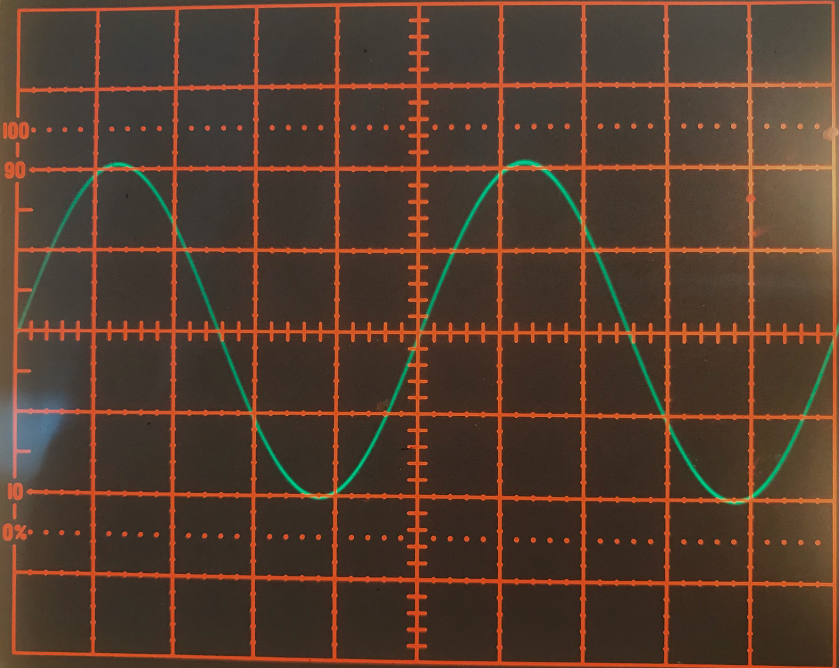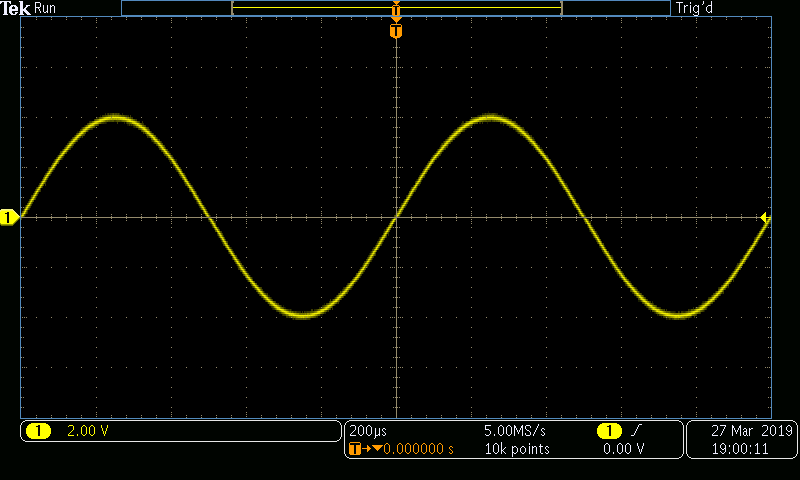
질문:
Why does my digital oscilloscope have more noise then my analog oscilloscope?
답변:
When comparing Digital oscilloscopes to Analog oscilloscopes, many customers assume that the digital oscilloscope has a higher level of vertical noise. With digital oscilloscopes, the trace may appear "fat" compared to its analog oscilloscope equivalent.

Figure 1: Example analog trace
In actuality, a digital oscilloscope does not have higher noise levels then the equivalent analog oscilloscope, it just appears that way. With analog oscilloscopes with CRT displays, the extreme ranges of noise are not displayed, because they occur quickly and infrequently, which means that the phosphor is lit quickly and infrequently, and thus those extremes are very dim or not drawn on the screen at all.
This means that analog instruments are not just displaying voltage against time, but in fact have a third dimension: Intensity. Intensity is related to frequency of occurrence of the signal. DSO oscilloscopes will show every hit with the same intensity, no matter how frequently a particular pixel is hit. Some of our digital oscilloscopes introduce the third dimension, called Digital Phosphor Oscilloscopes, which grade the intensity of the signal based on the frequency of the hits.

Figure 2: Example DPO trace
If you would like to minimize the noise, in the manner of an analog oscilloscope, you can use one or both of the following techniques: Averaging mode which tends to average out random noise, or bandwidth limiting, which will attenuate high frequency noise.

Figure 3: Averaged waveform trace
이 FAQ는 다음에 적용 됩니다:
제품 시리즈 없음
제품:
FAQ ID 53751
모든 FAQ 보기 »
